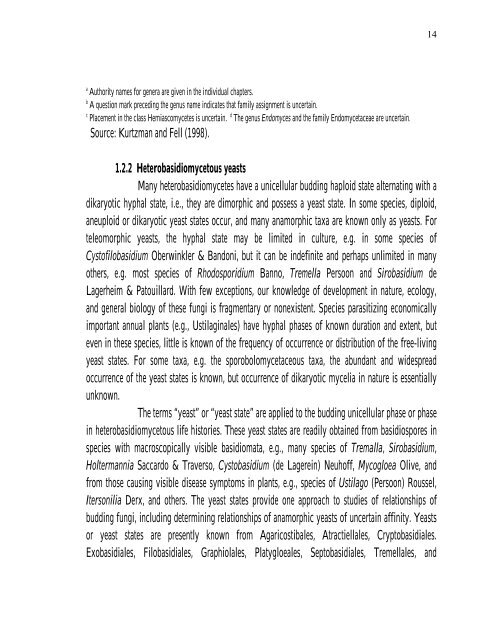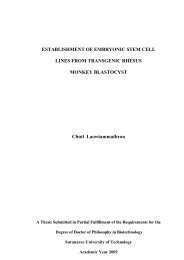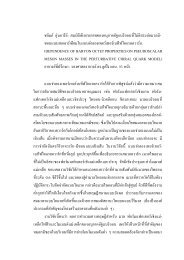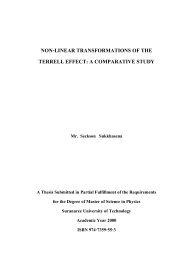PRODUCTION Of NUTRIENT SOURCES FOR RHIZOBIUM
PRODUCTION Of NUTRIENT SOURCES FOR RHIZOBIUM
PRODUCTION Of NUTRIENT SOURCES FOR RHIZOBIUM
You also want an ePaper? Increase the reach of your titles
YUMPU automatically turns print PDFs into web optimized ePapers that Google loves.
a Authority names for genera are given in the individual chapters.<br />
b A question mark preceding the genus name indicates that family assignment is uncertain.<br />
c Placement in the class Hemiascomycetes is uncertain. d The genus Endomyces and the family Endomycetaceae are uncertain.<br />
Source: Kurtzman and Fell (1998).<br />
1.2.2 Heterobasidiomycetous yeasts<br />
Many heterobasidiomycetes have a unicellular budding haploid state alternating with a<br />
dikaryotic hyphal state, i.e., they are dimorphic and possess a yeast state. In some species, diploid,<br />
aneuploid or dikaryotic yeast states occur, and many anamorphic taxa are known only as yeasts. For<br />
teleomorphic yeasts, the hyphal state may be limited in culture, e.g. in some species of<br />
Cystofilobasidium Oberwinkler & Bandoni, but it can be indefinite and perhaps unlimited in many<br />
others, e.g. most species of Rhodosporidium Banno, Tremella Persoon and Sirobasidium de<br />
Lagerheim & Patouillard. With few exceptions, our knowledge of development in nature, ecology,<br />
and general biology of these fungi is fragmentary or nonexistent. Species parasitizing economically<br />
important annual plants (e.g., Ustilaginales) have hyphal phases of known duration and extent, but<br />
even in these species, little is known of the frequency of occurrence or distribution of the free-living<br />
yeast states. For some taxa, e.g. the sporobolomycetaceous taxa, the abundant and widespread<br />
occurrence of the yeast states is known, but occurrence of dikaryotic mycelia in nature is essentially<br />
unknown.<br />
The terms “yeast” or “yeast state” are applied to the budding unicellular phase or phase<br />
in heterobasidiomycetous life histories. These yeast states are readily obtained from basidiospores in<br />
species with macroscopically visible basidiomata, e.g., many species of Tremalla, Sirobasidium,<br />
Holtermannia Saccardo & Traverso, Cystobasidium (de Lagerein) Neuhoff, Mycogloea Olive, and<br />
from those causing visible disease symptoms in plants, e.g., species of Ustilago (Persoon) Roussel,<br />
Itersonilia Derx, and others. The yeast states provide one approach to studies of relationships of<br />
budding fungi, including determining relationships of anamorphic yeasts of uncertain affinity. Yeasts<br />
or yeast states are presently known from Agaricostibales, Atractiellales, Cryptobasidiales.<br />
Exobasidiales, Filobasidiales, Graphiolales, Platygloeales, Septobasidiales, Tremellales, and<br />
��






